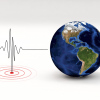Seismic beacon
Technology description
| The name of the technology: | Seismic beacon |
|---|---|
| Challenge: |
The consequences of natural phenomena such as earthquakes, volcanic eruptions, landslides and floods are often catastrophic and their prediction is still insufficient. Progress is dependent on improved methods for monitoring changes in the rock mass, especially its stress and saturation by cortical fluids with a large depth range. The methods used so far, such as seismic tomography, are very difficult to detect these changes. Particular attention should be paid to the threat to nuclear power plants, nuclear waste repositories, mining facilities, water management structures and urban agglomerations. |
| Description: |
The seismic beacon will allow measurements of changes in rocks with high sensitivity and stability over many years, which is not possible with current measurement equipment. It is mainly based on the non-linear effects of seismic waves, allowing the detection of previously unmeasurable quantities, such as reaching a critical stress before an earthquake. The beacon consists of a transmitter, a receiver and processing software. The transmitter generates continuously very stable monochromatic seismic waves of constant amplitude, which are transmitted at depth, pass through the rocks under investigation and are detected by seismic stations. The receiver is composed of several groups of seismic stations in a special arrangement that allows to detect even very weak waves from the beacon. The processing algorithm uses both linear and nonlinear properties of the seismic waves to detect changes in the rock mass. The goal is to create a software application in the future that will allow measurement, data processing and generation of warning signals. A smaller seismic beacon with a range of kilometres is currently under construction, which may be applied to monitoring water cannons and groundwater levels. It will also be used for testing and presentation purposes to interested parties. Main benefits - Measurement of stress changes in rocks at depth, including reaching critical stress levels. - Detection of magma movements. - Measurement of rock water saturation and changes in groundwater level. - Order of magnitude higher measurement sensitivity than current solutions. - Continuous measurement 24/7. - New methods of interpretation of measured data to provide early warning. |
| Commercial opportunity: |
Small local seismic beacons for early warning of an earthquake or landslide caused, for example, by a change in groundwater levels will be used by dam managers, oil or gas producers and other critical infrastructure. - Monitoring stresses in tectonically active areas. - Monitoring of movements of volcanic magma under volcanoes. - Monitoring groundwater conditions in situations of impending drought. - Monitoring groundwater and stresses around hazardous waste sites (nuclear, chemical). - Monitoring the movements of oil and gas during their extraction. - Monitoring the condition of dams. |
| IP protection status: | The solution is protected by a patent application. The transmitter and the software are still under research and development. |
| Development status: |
Phase 2Corresponds with TRL 3 and TRL 4 Feasibility study. There is a realistic design of the technology and the initial tests in the laboratory are leading to the specification of the technology requirements and its capabilities.
|
| Partnering strategy: | Collaboration investment |
| More information: |
We welcome partners from future seismic beacon manufacturers and customers for further development, testing and production. |
| Images: | |
| Categories: | Environment and Climate Physics Civil Engineering and Architecture |
| Owner of a technology: |

